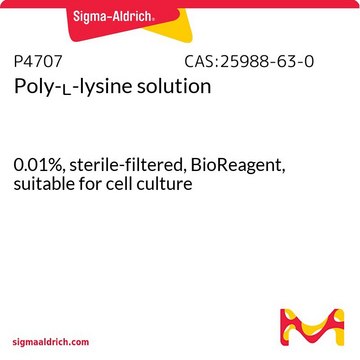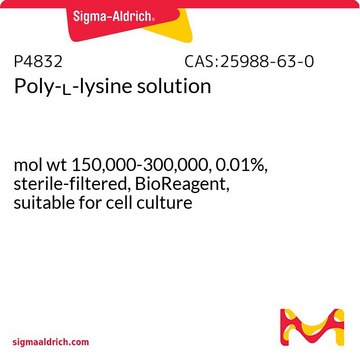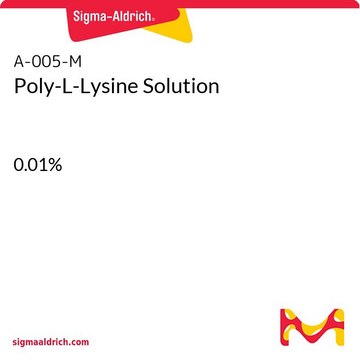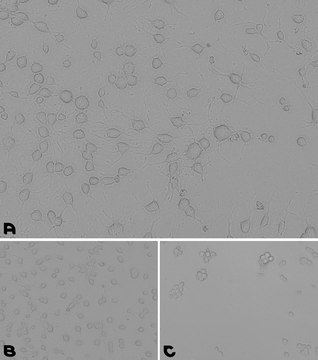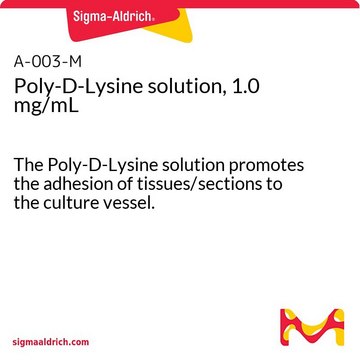A-003-M
Poly-ᴅ-Lysine Hydrobromide
synthetic, liquid, 1 mg/mL, suitable for cell culture
Synonym(s):
poly lysine
Select a Size
Select a Size
About This Item
Recommended Products
Product Name
Poly-D-Lysine solution, 1.0 mg/mL, The Poly-D-Lysine solution promotes the adhesion of tissues/sections to the culture vessel.
biological source
synthetic
Quality Level
form
liquid
manufacturer/tradename
Specialty Media
technique(s)
cell culture | mammalian: suitable
input
sample type neural stem cell(s)
sample type epithelial cells
sample type: human embryonic stem cell(s)
sample type hematopoietic stem cell(s)
sample type mesenchymal stem cell(s)
sample type pancreatic stem cell(s)
sample type induced pluripotent stem cell(s)
1 of 4
This Item | A005M | P9155 | P1024 |
|---|---|---|---|
| Quality Level 100 | Quality Level 100 | Quality Level 200 | Quality Level 300 |
| form liquid | form liquid | form lyophilized powder | form powder or solid |
| manufacturer/tradename Specialty Media | manufacturer/tradename NovaSeptum® | manufacturer/tradename - | manufacturer/tradename - |
| input sample type neural stem cell(s) | input - | input - | input - |
General description
Application
Biochem/physiol Actions
Features and Benefits
- Poly-D-Lysine (PDL) solution is diluted in phosphate buffer saline (PBS), water, or 0.1M borate buffer.
- Working dilutions of 50μg/mL to 100μg/mL are usually adequate.
- It has a surface coverage of 3-10μg/cm2.
- PDL can be stored at -20 ˚C for up to 18 months.
- Plates are coated for 3 hours overnight and up to 3 days when stored at 4˚C.
- PDL-coated plates are used immediately or stored in PBS for up to 5 days.
Physical form
Preparation Note
Storage and Stability
Storage Class Code
12 - Non Combustible Liquids
WGK
nwg
Flash Point(F)
Not applicable
Flash Point(C)
Not applicable
Certificates of Analysis (COA)
Search for Certificates of Analysis (COA) by entering the products Lot/Batch Number. Lot and Batch Numbers can be found on a product’s label following the words ‘Lot’ or ‘Batch’.
Already Own This Product?
Find documentation for the products that you have recently purchased in the Document Library.
Our team of scientists has experience in all areas of research including Life Science, Material Science, Chemical Synthesis, Chromatography, Analytical and many others.
Contact Technical Service